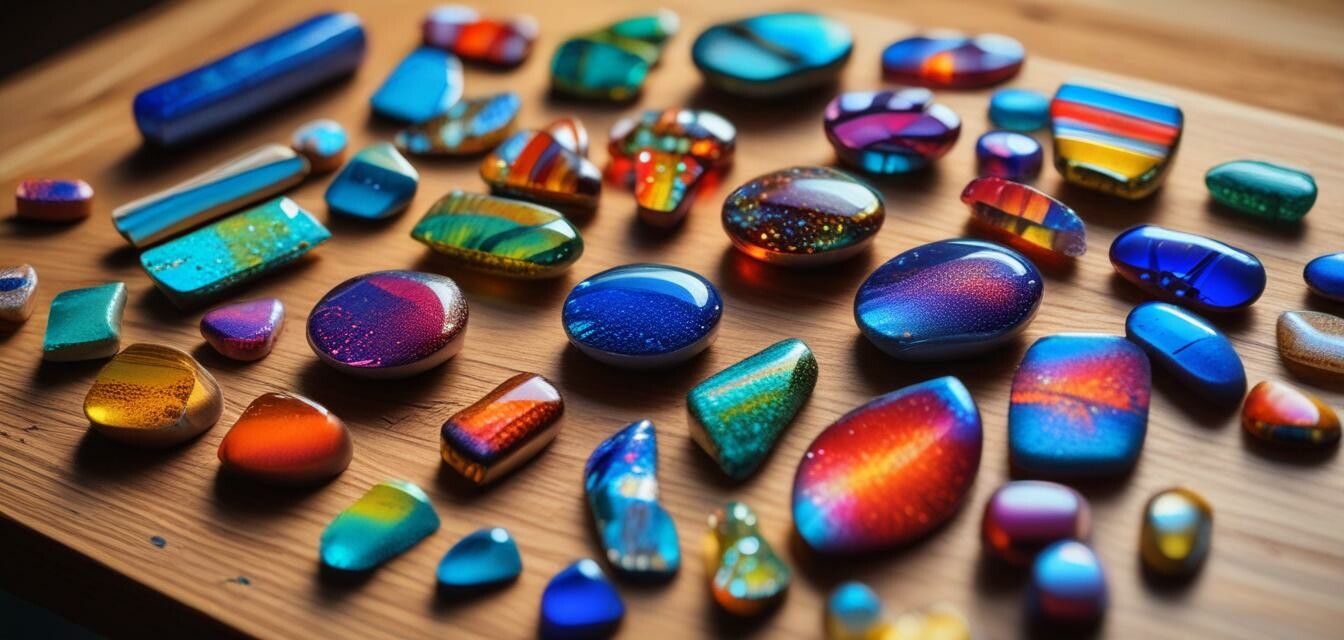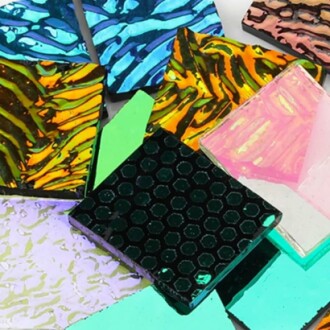
How to Choose the Right Dichroic Glass for Your Projects
Key Takeaways
- Dichroic glass offers unique color effects that can enhance any art project.
- Select the appropriate COE for your specific glass projects.
- Consider the texture and thickness of the glass to achieve desired results.
- Experiment with different colors and shapes for various artistic effects.
Dichroic glass adds a stunning visual impact to any glass art project, making it a favorite among artists. Its ability to exhibit multiple colors from different angles offers unique creative opportunities. This guide will help you choose the right dichroic glass for your projects by discussing its essential qualities, effects, and the best uses.
Understanding Dichroic Glass
Dichroic glass is created by applying a thin film of metal oxides to the surface of the glass. When light hits it, the glass can display two different colors based on the angle of light and the viewer's perspective. This unique feature is why artists often incorporate it into their glasswork.
Types of Dichroic Glass
- Fusible Dichroic Glass: Ideal for fusing projects, retains its color when melted.
- Slumped Dichroic Glass: Works well in slumping projects, can create stunning shapes.
- Sheet Dichroic Glass: Available in various thicknesses, great for cutting and shaping.
Factors to Consider When Choosing Dichroic Glass
| Factor | Description |
|---|---|
| Coefficient of Expansion (COE) | Match the COE of the dichroic glass with the other glass materials used to prevent cracking. |
| Texture | Dichroic glass comes in various textures which can affect the final look of your project. |
| Thickness | Choose a thickness that suits your desired outcome; thinner glass offers different effects. |
| Color | Select colors that align with your project goals; remember, light changes the way colors appear. |
Best Uses for Dichroic Glass
Dichroic glass can be used in a variety of projects, providing versatility for artists. Here are some popular applications:
- Jewelry Making
- Fused Glass Art
- Functional Glass Items (like plates and bowls)
- Artistic Embellishments for Larger Glass Projects
Recommended Products
3bags COE90 Dichroic Glass Scrap Assorted Fusible Glass
This product includes assorted varieties of dichroic glass pieces, perfect for creating unique jewelry and embellishments.
Learn MoreTips for Working with Dichroic Glass
Beginner Glass Making Tips
- Start with small projects to practice using dichroic glass.
- Experiment with combinations of different colors and textures.
- Always use proper safety equipment when working with glass and kilns.
- Use a microwave kiln for easier glass fusing.
Pros
- Creates stunning visual effects.
- Highly versatile for various projects.
- Available in numerous colors and textures.
Cons
- Can be expensive compared to regular glass.
- Requires specific techniques to achieve desired results.
Conclusion
Dichroic glass adds beauty and richness to any glass art project. Understanding its unique qualities and variations will help you select the right type for your needs. Remember to consider the COE, texture, thickness, and color when making your choice. With practice and experimentation, you can create stunning pieces of glass art that truly reflect your creativity.
Further Reading
- Glass Casting Supplies - Explore this essential material for your next project.
- Kiln Accessories and Tools - Ensure you have all the necessary tools for safe glass crafting.
- Glass Kilns - Understand the various kilns available for glass fusing and slumping.
- Beginner Glass Making Techniques - Get started with the basics of glass making.
- Exploring Glass Sheets and Supplies - Everything you need to know about raw materials for your projects.


